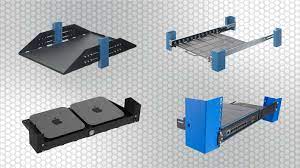In the heart of every data center lies the server rack, a vital piece of equipment responsible for housing critical IT infrastructure. These sturdy cabinets keep servers, network devices, and other components organized, secure, and functioning optimally. But with so many server case options available, choosing the right one can feel overwhelming. This guide equips you with the top tips to navigate the selection process and ensure your server cabinet perfectly meets your specific needs.
Understanding Your Requirements
Before exploring server racks, pause to evaluate your present and future IT hardware requirements. Consider these important aspects:
- Number of servers and rack-mounted devices: Make a detailed inventory of all the equipment you plan to house in the rack. This includes servers, switches, routers, storage devices, and any other rack-mountable components.
- Size and weight of the equipment: Not all servers are created equal. Knowing the dimensions (height, depth, width) and weight of your equipment will help determine the appropriate rack size and weight capacity. When considering weight capacity, be sure to factor in the weight of any additional shelves you plan to install for further storage within the rack. You can find helpful resources on choosing network rack shelves.
- Anticipated growth and future expansion plans: Consider your IT roadmap. Will your server needs increase in the near future? Choosing a rack with extra capacity ensures you have room for additional equipment as your data center grows.
By taking a comprehensive look at your current and future requirements, you’ll be well-positioned to make informed decisions when selecting the ideal server rack for your data center.
How to Buy a Server Rack: Key Considerations
Now that you understand your equipment needs, let’s delve into the key features to consider when selecting your server cabinet:
Size:
- Height in Units (U): Measured in U, where 1U=1.75 inches. Common sizes include 42U, 48U. Select a rack for current needs and future growth.
- Depth: Standard cases are about 36 inches deep. Deeper racks allow for better cable management and fit larger servers.
Material and Weight Capacity:
- Materials: Server racks are typically constructed from steel or aluminum. Steel offers superior weight capacity but is heavier, while aluminum is lighter but may have limitations on how much weight it can support. Ensure the rack you choose can handle the total weight of your equipment.
Door Options:
- Solid Doors: Solid doors provide enhanced security for your equipment but can restrict airflow.
- Mesh Doors: Mesh doors allow for better ventilation but offer less physical security.
Consider a combination of both solid and mesh doors to strike a balance between security and airflow needs.
Ventilation and Cooling:
- Adequate airflow is essential to avoid overheating and maintain the peak performance of your devices. Look for a case with built-in fans or perforated panels to promote airflow.
- Some racks may also be compatible with additional cooling accessories for situations requiring even more aggressive cooling strategies.
Cable Management:
- Organized cables are essential for maintaining good airflow and keeping your case tidy. Choose a rack with built-in cable management features like vertical channels or D-rings to facilitate proper cable routing.
Additional Features to Consider (Optional):
- Locking mechanisms: Enhance the physical security of your equipment.
- Grounding features: Promote electrical safety within the rack.
- Casters or wheels: Provide mobility for easier maintenance or reconfiguration of the cabinet.
- EMI/RFI shielding: Protects sensitive equipment from electromagnetic interference, especially important for specific data center environments.
Conclusion
Choosing the right server storage is an investment in the health and longevity of your critical IT infrastructure. By following this guide, you’ll be well-equipped to buy a server rack consciously:
- Understand your current and future equipment needs in terms of quantity, size, weight, and potential growth.
- Select a rack size (U height and depth) that accommodates your equipment comfortably with room for future expansion.
- Choose a material (steel or aluminum) with a weight capacity exceeding the total weight of your equipment.
- Consider door options (solid, mesh, or combination) to balance security and airflow needs.
- Prioritize proper ventilation by selecting a cabinet with built-in fans or perforations, and explore additional cooling options if necessary.
- Facilitate cable management by choosing a rack with features like vertical channels or D-rings.
Remember, these are just some of the key considerations. Optional features like locking mechanisms, grounding, casters, and EMI/RFI shielding can further enhance your server case’s functionality and security depending on your specific environment.
If you have any doubts or require assistance navigating the selection process, consulting with IT professionals familiar with your data center’s needs can be invaluable. They can provide expert guidance to ensure you choose the perfect server rack to house your critical IT equipment for years to come.

































